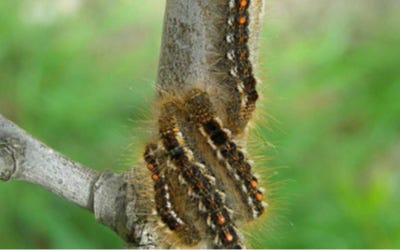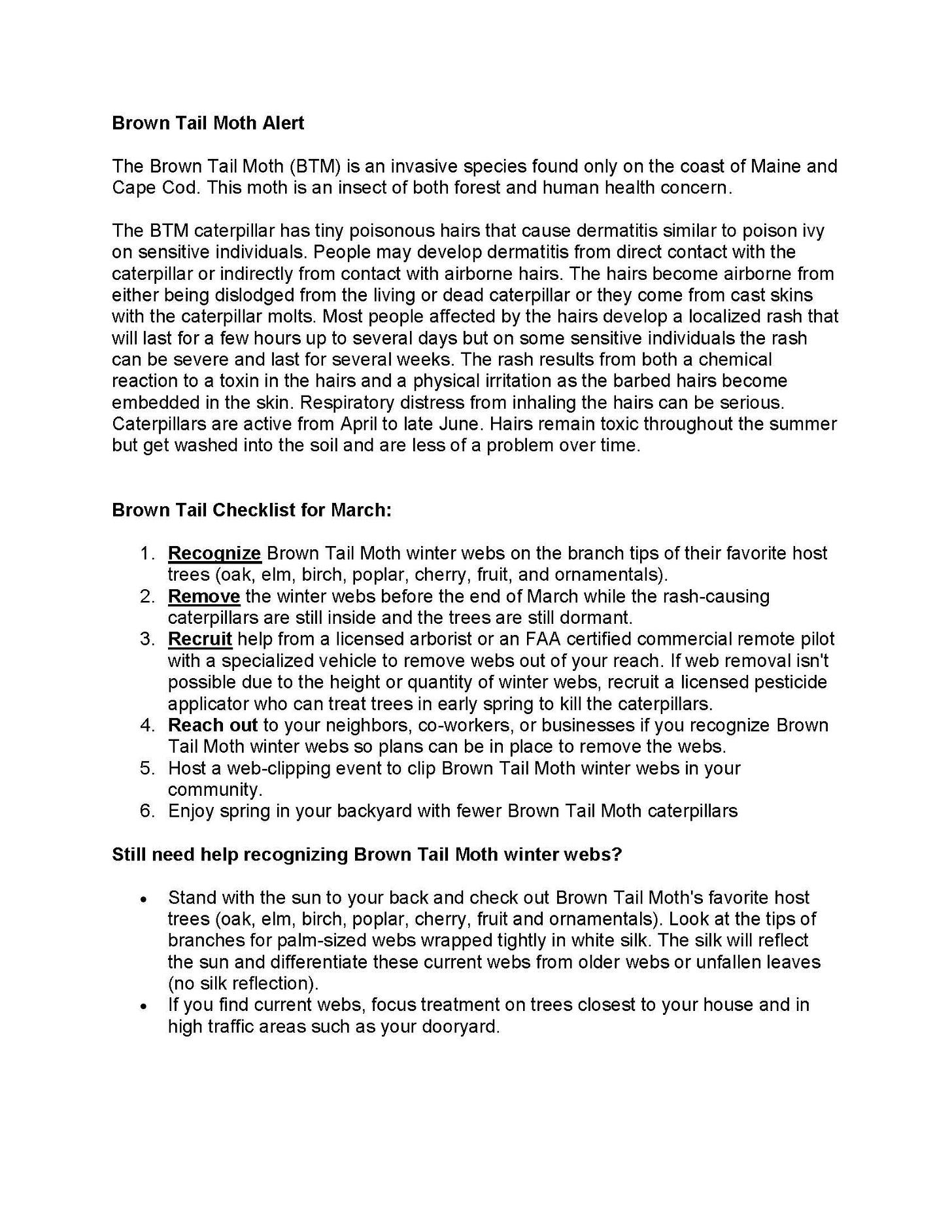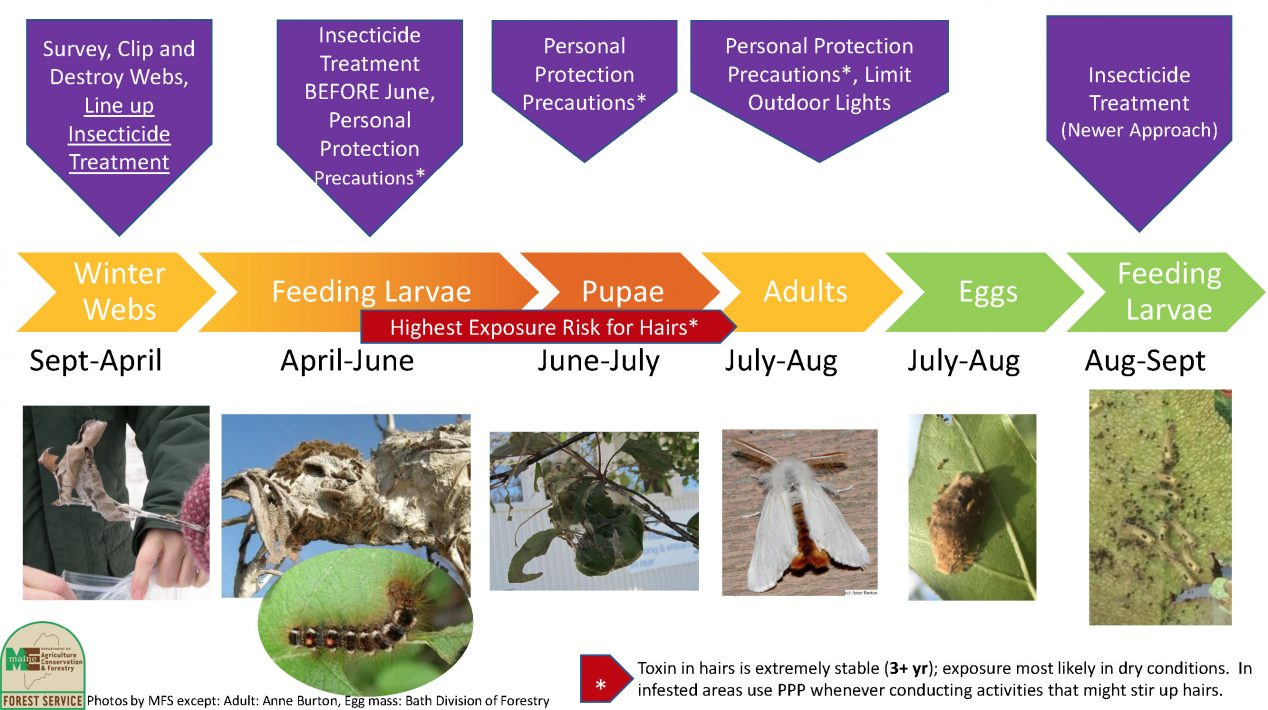BAR HARBOR—The invasion began with a Harvard professor, who was deemed impractical by the New York Times. He brought a creature to the United States for study. It was on roses from Holland. The creature had eggs—a cluster of eggs. And the professor? He had his window open on a windy day. The wind gusted enough or blew just right to lift that cluster of eggs out the window and onto the grounds of Harvard.
That sequence began a fight against an invader that’s lasted well over a century in New England. And that fight? It isn’t over yet. The brown-tail moth (Euproctis chrysorrhoea) is still on Maine’s coast and Cape Cod, and still destroying plants and giving rashes. The moths can also cause respiratory distress in humans.
Bar Harbor Public Safety Officer, Mike Gurtler, is trying to inform townspeople to get battle ready against the brown-tail moths, which decimated the 100-year old elm trees at Harvard back in 1912 and haven’t really stopped though the cycles of devastation have waned and resurged.
“Its fecundity is amazing. The poisonous nature of its contact with human individuals is undoubted,” an unnamed reporter for the New York Times wrote in its July 1, 1909 issue. They said, “We trust the agricultural departments of both states (Massachusetts and Connecticut) will be lavish in spending money” to stamp out the moths.
They weren’t. Or if they were? It didn’t work.
The caterpillar has continued to ravish oaks, willows, elms, and apple trees. They even eat shrubbery and vines.
They’ve been called the enemy of the forest, a killer, a menace, destroyer of foliage, an affliction, a tarantula, and a number of expletives since the late 1890s. It wasn’t just the Harvard professor’s fault. Fast cargo ships were also to blame, bringing the moths along with produce.
Gurtler sent out an alert, hoping to help residents spot and eradicate the moths as soon as they can.
“Brown-tail moth concerns have multiplied over the past few years in Bar Harbor,” Gurtler said. “As the town’s health officer, I encourage residents to help themselves and their neighbors by addressing possible infestations in the spring when the insect’s tents can be removed to prevent the growth of the caterpillars.”
According to a 2019 statement by Acadia National Park, the moth “was reported by a visitor on Great Head and confirmed by a Maine State entomologist in March, 2019. Brown-tail moths have been in Maine for over a hundred years and has gone through occasional outbreaks, but have become quite numerous along the mid-coast of Maine in recent years.
Map: Acadia Exotic Plant Management Team
OTHER NEWS
The judge has set deadlines and a potential trial date in the cruise ship limit lawsuit against the town of Bar Harbor. For our updated story about that, click here.
LINKS TO LEARN MORE
https://timesmachine.nytimes.com/timesmachine/1912/10/06/100378760.html?pageNumber=53
https://www.maine.gov/dhhs/mecdc/infectious-disease/epi/vector-borne/browntail-moth/index.shtml
https://www.nps.gov/articles/browntail-moth-in-acadia.htm
https://timesmachine.nytimes.com/timesmachine/1909/07/01/101888823.html
https://www.maine.gov/dhhs/mecdc/infectious-disease/epi/vector-borne/browntail-moth/index.shtml
https://extension.umaine.edu/cumberland/2019/05/13/browntail-moth/
https://www.coastalpharmacyandwellness.com/browntail-moth-get-facts-now/
https://www.maine.gov/dacf/mfs/forest_health/invasive_threats/browntail_moth_info.htm
Correction: I wrote “WRITE” for “RIGHT.” Thanks to Jennifer Fisk for letting me know and boo to my morning brain. That error has been rectified, but there are probably others.












